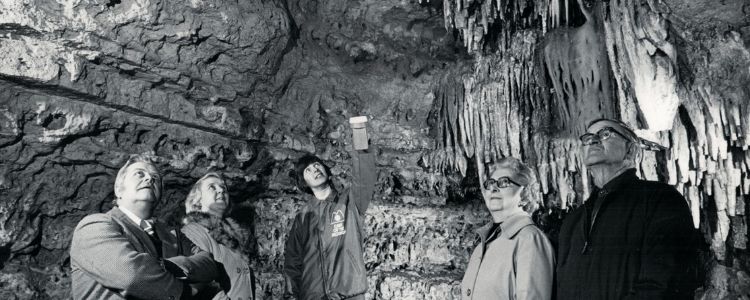During this Education Era, many different scientists came to study the cave. In 1974 the Wisconsin Speleological Society helped solve the question of whether there was any more to the cave, past the southern collapse. The cave ended so abruptly that it was the most logical place to search for more. Being careful, they dug a path about 3 feet high and 64 feet in length to the left of this collapse. However, the WSS did not discover a new passageway.
The next year, Dr. Douglas Caldwell came to the cave to research a new bacteria identified called the “Leptothrix”. This bacteria helps in the coloring of the formations of the Cave of the Mounds. Dr. Caldwell had the opportunity to study these organisms in their natural habitat – which is always the best place to study them. He believed that most of the deposited coloring was caused by bacteria. This study was eventually published in 1980 in the Geomicrobiology Journal.

